Vietnam discovered its first COVID-19 infection in early January. Now, this country of 96 million people has reported a mere 324 confirmed total cases and zero deaths. Having earned high praise for its effectiveness in containing the COVID-19 outbreak, Vietnam is now one of the first countries to ease social distancing measures and reopen its society.
Vietnam’s effective response is enabled by the country’s ongoing efforts to improve governance and central-local government policy coordination. Vietnam’s state capacity was not born overnight but resulted from decades-long efforts to improve governance and responsiveness at local levels.
The long road towards improved governance
While observers have attributed Vietnam’s success to the country’s authoritarian nature and past experience with SARS, one salient narrative has garnered little attention: the decades-long effort to improve governance and responsiveness at local levels. As students of Vietnam well know, the implementation of central policies is anything but automatic; rather, it is symptomatic of a carefully calibrated central-local relationship. Against that backdrop, how have Vietnamese leaders managed to induce compliance with restrictive COVID-19 measures in a country otherwise notorious for challenges in regulatory enforcement?
Crediting mainly Vietnam’s authoritarian toolkit risks missing the country’s long-standing efforts to professionalize the administrative state. Leveraging data from Vietnam’s Provincial Competitiveness Index (PCI) and Provincial Administrative Performance Index (PAPI) — joint projects between Vietnamese authorities and the United States Agency for International Development (USAID) and the United Nations Development Programme (UNDP), respectively — we show that Vietnamese provinces have made steady improvements in healthcare, information access, and corruption control.
Access to health insurance has grown rapidly over time, with 90% of Vietnamese citizens insured today (Figure 1). Hospital quality has improved continuously, and demands for hospital bribes have dropped to a 10-year low (Figure 2). Taken together with the government’s policy to provide mass quarantine largely free of charge, these data suggest that Vietnamese citizens today did not have to worry about costs from COVID-19 tests (formal or informal), associated hospitalization, and centralized quarantine, thereby increasing their willingness to comply with extensive contact tracing and strict quarantine measures.
Survey data also document a turnaround, albeit a slow one, in citizens’ perception of government transparency — defined as the “full flow of information” — at both national and provincial levels. Citizens are increasingly able to access government documents (including land maps, budgets, and legal documents) (Figure 3), enabled by Vietnam’s 2018 Access to Information Law and publicly available court judgments.
Though some suspect political motives, the ongoing anti-graft campaign has generally received favorable responses from Vietnam watchers and international audiences, and experience with petty bribery appears to be declining across a range of citizen and business surveys. The anti-graft campaign has also intersected with the pandemic response. The head of Hanoi’s Center for Disease Control was recently indicted on a charge of collusion to inflate COVID-19 test kit costs.
Survey data also document a turnaround, albeit a slow one, in citizens’ perception of government transparency — defined as the “full flow of information” — at both national and provincial levels. Citizens are increasingly able to access government documents (including land maps, budgets, and legal documents) (Figure 3), enabled by Vietnam’s 2018 Access to Information Law and publicly available court judgments.
Though some suspect political motives, the ongoing anti-graft campaign has generally received favorable responses from Vietnam watchers and international audiences, and experience with petty bribery appears to be declining across a range of citizen and business surveys. The anti-graft campaign has also intersected with the pandemic response. The head of Hanoi’s Center for Disease Control was recently indicted on a charge of collusion to inflate COVID-19 test kit costs.
Survey data also document a turnaround, albeit a slow one, in citizens’ perception of government transparency — defined as the “full flow of information” — at both national and provincial levels. Citizens are increasingly able to access government documents (including land maps, budgets, and legal documents) (Figure 3), enabled by Vietnam’s 2018 Access to Information Law and publicly available court judgments.
Though some suspect political motives, the ongoing anti-graft campaign has generally received favorable responses from Vietnam watchers and international audiences, and experience with petty bribery appears to be declining across a range of citizen and business surveys. The anti-graft campaign has also intersected with the pandemic response. The head of Hanoi’s Center for Disease Control was recently indicted on a charge of collusion to inflate COVID-19 test kit costs.
Transparency efforts have also mitigated skepticism towards the Party-State’s COVID-19 reporting. The Ministry of Health has posted all reported cases online, enabling deeper analysis by data scientists and bloggers, and gaining endorsement from public health experts. Vietnam’s online network of activists, while still critical of privacy violations and the lack of freedom of speech, has not raised the alarm on widespread fatalities or cover-ups. When a patient who earlier tested positive for COVID-19 died from liver failure, the government’s Facebook portal publicly discussed the reasoning for not counting his death, due to the patient’s advanced liver dysfunction and a series of negative COVID-19 tests premortem. Thus, while under-counting is possible, public disclosures open space for discussion and allow for corrections if needed.
In sum, Vietnam’s strengthened state capacity during these past months is the culmination of a deliberate, sustained effort to improve governance starting at local levels. While it is too early and difficult to make any claims of causality, Vietnam’s upward trends in healthcare access, transparency, and overall local governance suggest that effective local-central coordination plays an important role implementing national policies. Beyond the simple distinction between authoritarian and democratic regimes, this narrative deserves further attention as part of a larger, global account of the administrative state in times of crisis.
Hanoi’s experience
Hanoi’s experience provides a key window into this dynamic. The capital of Vietnam and home to Noi Bai International Airport, Hanoi has registered far more COVID-19 cases than other cities and provinces. While Hanoi ranks high as an attractive destination for businesses, Hanoians have ranked the capital relatively low in its quality of public services and transparency measures, especially as related to environmental and land management. Against this background, Hanoi faced a steep battle against local outbreaks. Its success so far has relied on both reaching downward and upward, by strengthening coordination with lower administrative levels and effectively utilizing centralized resources, including the Vietnamese army and specialized units led by healthcare experts.
Hanoi’s first local outbreak in early March led to the swift lockdown of one of its most affluent neighborhoods — a move sanctioned by central authorities. Days earlier, an infected person returned to Vietnam from the U.K. after a side trip to Milan, Italy — by then, the pandemic’s epicenter. Hanoi leadership called an overnight emergency meeting, immediately declared the news, and started a highly public campaign to find and notify other passengers from the same flight. While policemen barricaded the streets and set up stations around the infected neighborhood, they also provided daily check-ins, disinfectants, and free food to quarantined locals.
Following a model the Ministry of Health established in early February, Hanoi’s Health Department called emergency meetings with the heads of hospitals and local health departments within Hanoi to coordinate action. It requested the six major hospitals to work on scenarios for a possible surge, including plans to add 1,000 beds. Hanoi authorities issued an order extending school closures, by then already shuttered for a month and slated to open in just two days.
National authorities quickly updated regulatory measures: passengers arriving from international flights were required to fill out health declaration forms; arrivals from high-risk areas were subjected to testing and, if deemed potentially infected, required to enter a centralized quarantine camp run by army units. These swift actions, together with consistent public health messaging, bolstered public confidence in leadership at a time when much was still unknown about the virus.
In late March, Hanoi faced a severe outbreak at Bach Mai, one of its busiest hospitals. Hanoi leaders rolled out rapid testing, conducting swab tests for over 30,000 patients, medical personnel, and visitors. Coordinating upward, it brought in specialized units (tổ công tác) of health experts who had worked on other outbreaks as well as the Hanoi Capital High Command (Bộ Tư Lệnh Thủ Đô Hà Nội) — a People’s Army special unit under the Department of Defense — to disinfect the hospital and coordinate people’s movement. Coordinating downward, in addition to regular check-ups and home visits, city authorities encouraged local administrative units and citizens to report home quarantine violations through a mobile app, Hanoi Smart City, which provides daily updates on COVID-19 cases, self-reporting of health symptoms, and mapping the location of existing cases.
Hanoi’s case highlights the importance of both upward and downward coordination. While citizen survey data indicated that Hanoi has been struggling with certain governance metrics, its many transparency measures and comprehensive response in the past few months point towards a path of improved governance and responsiveness.
Reopening the Economy
Transparency, reduced corruption, and increased government responsiveness will also be critical for healthy businesses to emerge from the lockdown. On April 22, Vietnam declared that the nationwide social-distancing order could be relaxed, except for a delayed release of several areas deemed high-risk, including Hanoi. As the slogan now shifts from “fighting the enemy epidemic” to “live peacefully with the pandemic,” what are the prospects for Vietnam’s economic recovery? The current strategy focuses on promoting the domestic market and repositioning Vietnam for opportunities in shifting global supply chains.
First, it is useful to understand COVID-19’s effect on Vietnam’s economy. The pre-pandemic PCI survey documents the operational difficulties firms faced in 2019: Even then, 63% reported difficulty in finding customers, 35% in getting credit, 34% in recruiting employees, 28% in finding business partners, and 27% in market downturns. The pandemic exacerbated all of these problems. A recent snap survey by the Vietnam Chamber of Commerce and Industry (VCCI) shows the economic trade-offs the containment measures posed. Most firms, whether foreign, private, or state-owned, projected losses (Figure 4) and lay-offs (Figure 5). Looking at the underlying cause, VCCI finds that nearly 85% of the surveyed enterprises said their consumption markets have narrowed, 60% worried about the lack of capital and cash flow, and 43% anticipated lack of work.
To promote Vietnam’s domestic market, particularly firm survival, Vietnamese leaders have issued a host of relief measures, including freezing business obligations to pay costs such as retirement and life insurance contributions, providing quick-access loans for wage payments, and increasing social welfare for laid-off workers. The Access to Information Law will help citizens and businesses monitor these transactions. Government responsiveness is also critical, as business advocates have flagged access to relief as an issue. Officials have elevated concerns about the high barriers to access funding (for example, the requirement that employees were reduced by at least 50% and the requirements around documenting loss).
Hanoi leaders have put forth a plan, coordinated with other provinces, to promote linkage in the domestic market, including in tourism, agriculture, and seafood. Among other actions, this requires reorienting businesses towards high-demand areas, for example from growing decorative plants to consumable produce. While eager to restart its economy, Hanoi also made clear that economic revitalization must be balanced with public health goals by imposing limited hours for businesses, crowd control, and continued enforcement of social distancing and face-covering requirements. Compliance with these measures hinges on continued public trust.
National and local leaders are also exploring ways to reposition Vietnam for opportunities in shifting global supply chains. While Vietnam likely stands to benefit from countries’ desire to diversify away from China, its domestic businesses — 80% of which have fewer than 10 employees — themselves depend on China for raw materials and components. As a result, leaders have advocated for boosting supporting industries, particularly manufacturing, technology, and textile sectors. Hanoi has also promised economic incentives such as extended land leases and preferential loans to attract investment. As the PAPI data highlights, improving transparency measures toward land and environmental policies will be key in sustaining public support.
Despite the clear challenges Vietnam faces, the country’s strong growth trajectory and swift COVID-19 response have positioned it to be one the world’s few economic bright spots. The World Bank projected that Vietnam will be one of few countries to experience positive economic growth in 2020, and it managed to attract $8.6 billion in foreign investment during the first quarter of 2020. This success, however, depends upon continuing the historical trajectory of improved economic governance, including reducing corruption.
Conclusion
Vietnam’s improving governance and central-local policy coordination have helped it weather the COVID-19 pandemic, enabling the reopening of its society and economy ahead of most peers. These key features likely remain critical as Vietnamese leaders grapple with balancing the need to support businesses with ensuring public health. As we collectively seek to glean lessons from the global efforts to combat the pandemic, Vietnam’s story moves beyond the simple distinction of regime type to challenge us to think deeper about bureaucratic capacity and responsiveness within all forms of government.
Data for the above graphs, except VCCI’s proprietary data, are available here.
Adrien Chorn created the graphs for this post.

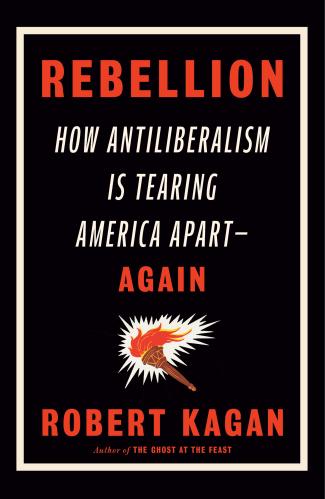
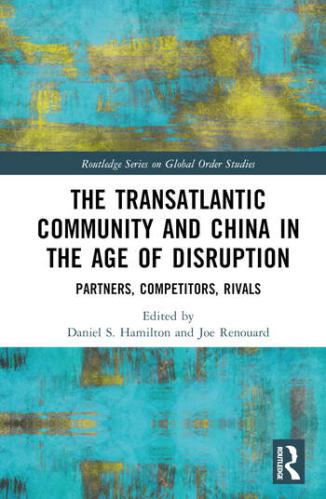
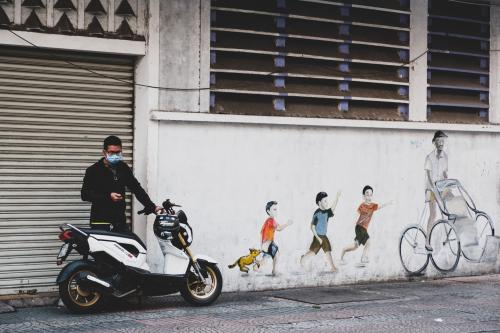
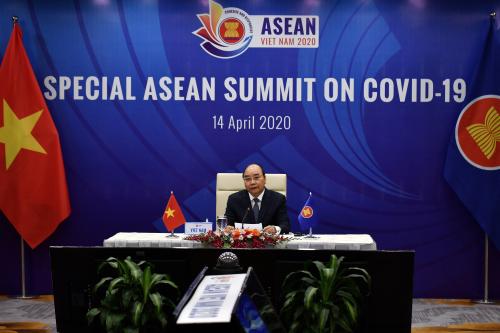
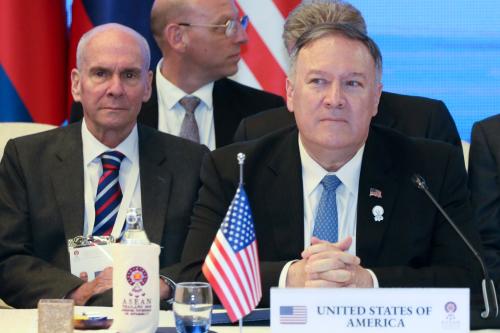


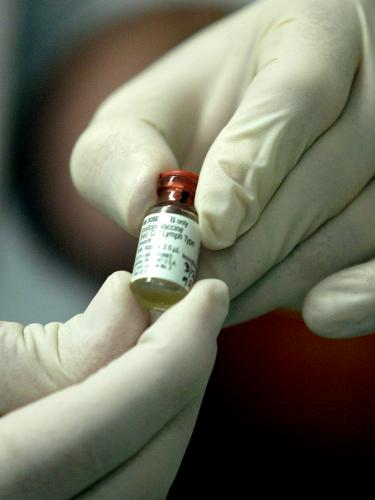

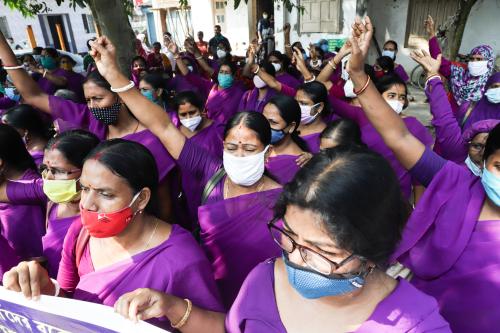
Commentary
Reopening Vietnam: How the country’s improving governance helped it weather the COVID-19 pandemic
May 20, 2020